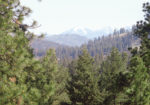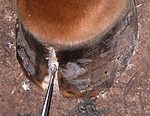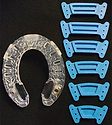Advertise Follow Us
Articles Tagged with ''hooves''
Shoeing for a Living
Montana guest ranch gets its horses shod while also helping educate future farriers
Read More
Farewell to the Nation's Farrier
Peter Cote steps down after 35 years of service helping “The Old Guard” keep Arlington’s traditions
Read More
Add Biomechanics to Physiological Trimming for Winning Package
For years, we’ve heard the pros and cons of the physiological trimming method. At next winter’s International Hoof-Care Summit, you’ll learn how adding biomechanical data makes it even better
Read More
Treating Hoof Cracks And Other Hoof Maladies
Cornell farrier offers primer on therapeutic cases
Read More
How To
Synthetic Shoes Offer Advantages
Knowing the ins and outs of synthetic shoes can make them a good choice for some hoof cases
Read More
Lateral Extensions Offer Hope for Crooked Legs
Helping feet land flat is key, says Illinois farrier
Read More
When It Comes to Hooves, ‘Normal’ Isn't ‘Natural’
Dynamics of equine locomotion and the foot
Read More










